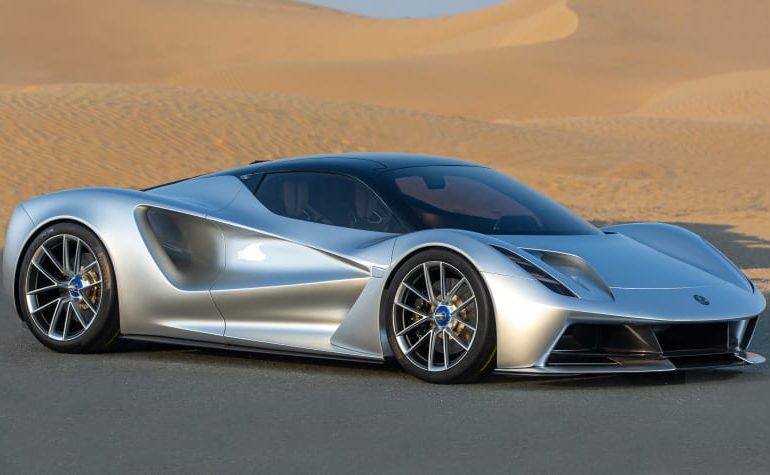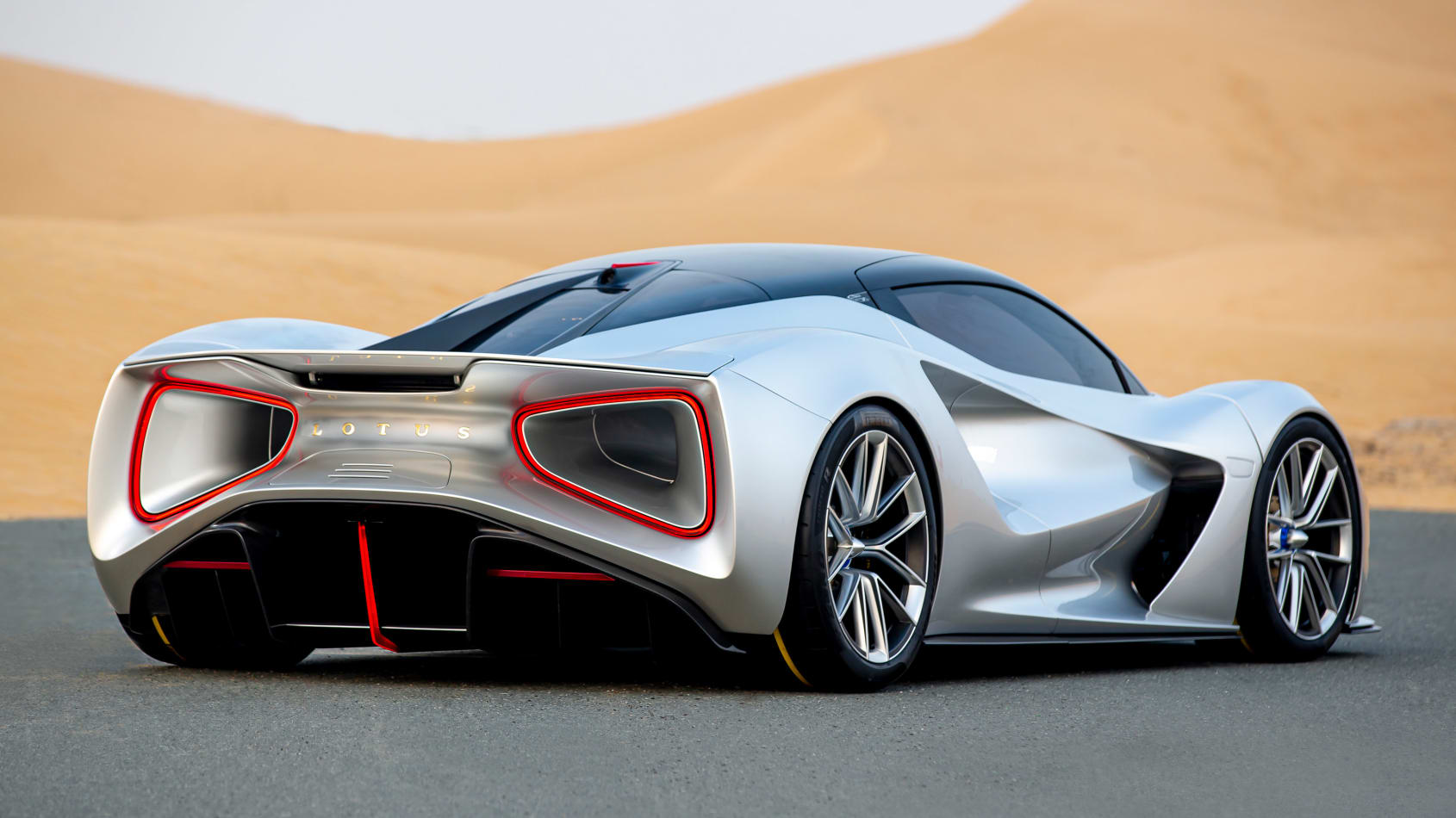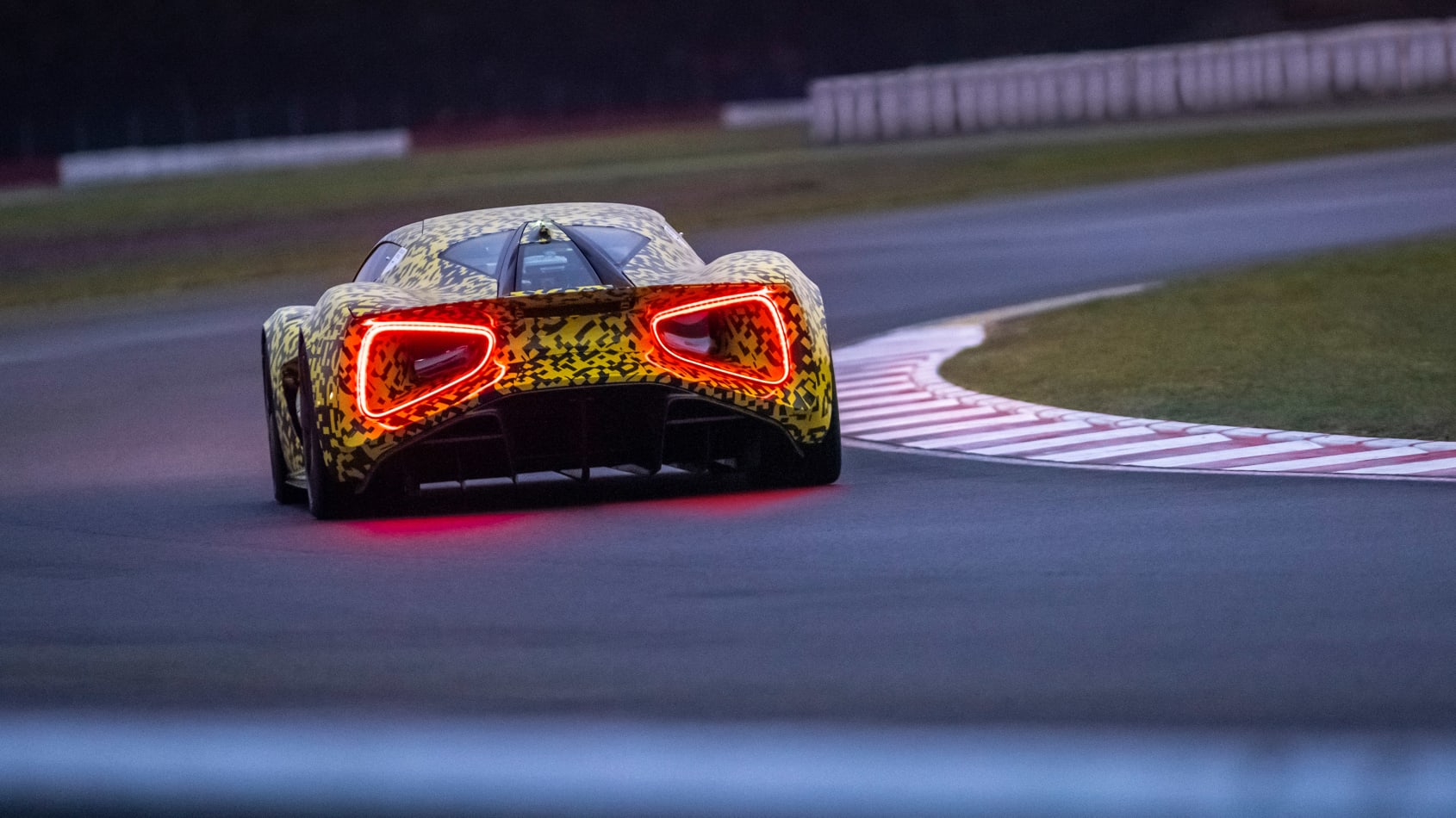The Lotus Evija is a very hotly anticipated hypercar. Being fully electric, with thought put into weight balance and overall aerodynamics, it could end up being one of the fastest hypercars ever made.
This, however, did prompt some thought from the chief aerodynamicist for the Evija project on how to keep the car planted on the road while not causing undue drag, slowing the car.
As reported by EVO, the Evija is designed with the concept of being a “fighter jet in a world of kites.”
Richard Hill, who is the chief aerodynamicist at Lotus, explains that the car was envisaged from the first concept as being an inverted wing. The faster the air moves over the low and sleek body, the more it sucks the car down to the road.
However, many supercars, like the Lamborghini Aventador and the Ferrari F8 Tributo, also use that concept. What makes the Evija different is that it also shapes the air traveling through the car.
A big limiting factor on top speed is what is known as vortex wash. If you live in an area where snow falls, you’ve seen this effect more often then you probably realize. When a car is traveling at speed, the air passing over it will whip the snow from the hood, roof, and such, but it will then suddenly curl back as it passes over the rear end of the car and follow the car for a bit, tumbling about in the disturbed, dirty air.
The same basic physics are also what causes weirs to form in rivers. When a large slow-moving body of water is suddenly accelerated and then reintroduced to slow water, it causes the water to circle back on itself in a powerful curl.
What the Evija does differently lie entirely in the gaping side tunnels that punch through the car from the midsection all the way out the tail. These take air from the sides of the car and, via narrowing and some shaping, compress it slightly so that it suddenly expands coming out of the tunnels. This essentially creates a small jet of air, referring to the jet fighter quote from earlier, that pulls the air that would otherwise create the vortex away from the rear of the car.
It also compliments the venturi effect coming from the active aerodynamics shaping air under the car before spitting it out via the massive rear diffuser. This air is also caught up in the jet stream, and in effect vacuums the car hard to the road at speed. It also forms a small vortex near the road, under the jet, that further pulls the car down into the road for phenomenal downforce.
Other airflow is managed through the front air intakes to cool the front differential and motors before passing either up into the tunnels, or down through the side slats behind the front wheels to cool the brakes and add to downforce by passing down the lower door channels.
Lastly, while the Evija does have a rear spoiler, it also includes a Formula 1 style drag reduction system (DRS) that will flatten the tail to near horizontal, to make the car as slippery as possible while it cuts through the air.
This is all needed because the Evija, with four independent electric motors and a large battery pack mounted right behind the cockpit, pushes out the equivalent of 1,972 BHP and 1,255 lbs-ft of torque. All of it available at 0 RPM.
The Evija has been tested in prototyping as being able to go from a standstill to 186 mph in under nine seconds. Thus, aerodynamics are important to keep something this powerful on the road and not entering orbit of Mars.







